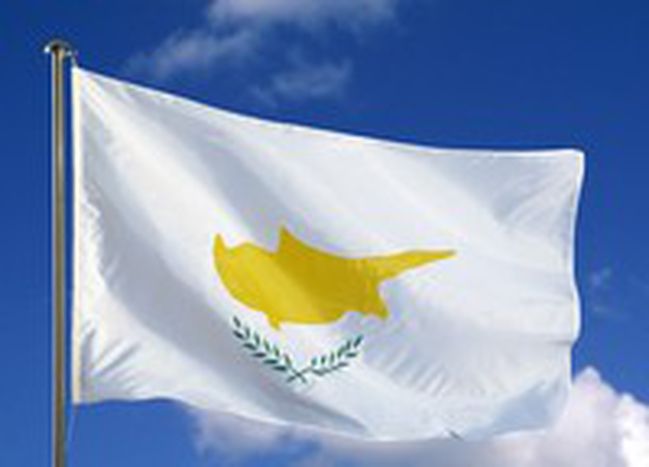
The Cyprus-Turkey-Europe triangle
Published on
Translation by:
 sharon rapose
sharon rapose
Legend has it that the goddess of love, Aphrodite, was born from the waters off the south-western coast of Cyprus. What would the goddess say now, if she saw her native soil split in two, with a single line dividing its people?
The birthplace of Aphrodite, Cyprus, is a small, strategically located island in the Mediterranean Sea. It has a history marked with attempts at conquest: from Alexander the Great to Richard the Lion-Heart; from the Templars to the Venetians; from the Ottoman Turks to the British. With the Turkish, Syrian and Libyan coasts within a stone’s throw, its location is so convenient that the British, having agreed to Cypriot independence in 1959, thought it best to keep their two military bases on Cyprus as part of the deal. But there is unrest among Cyprus’ population, which is primarily Greek and Turkish. On July 15 1974, Athens’ military junta staged a bloody pro-Greek coup in the Cypriot capital Nicosia, giving Turkey the opportunity to send its troops to the island. In 1983, the Turkish Cypriots named the zone occupied by its troops in the north The Turkish Republic of Northern Cyprus (TRNC), which only Ankara recognises as an independent state. Meanwhile, Turkey still refuses to recognise the Greek side, the Republic of Cyprus.
And Cyprus enters Europe
In the last 20-odd years, there have been several UN-sponsored attempts to reunify Cyprus, but with little success. Kofi Annan, Secretary-General of the UN, proposed the most recent of these in the spring of 2004, in the run-up to the entry of the Greek part of the island into the EU. The so-called Annan Plan foresaw a Greco-Turkish confederation of two largely autonomous constituent states, brought back together as the United Cyprus Republic, based on the Swiss confederal model. After a series of criticisms and amendments from both sides, the plan was submitted to popular referendum on 24 April 2004. In the Turkish Republic of Northern Cyprus, 65% of the population favoured the Annan Plan, while on the other side of the Green Line, 75% of the population pronounced their dissatisfaction: the referendum resulted in failure and saw the last hope of knocking down the final wall in Europe just slip away.
Nevertheless, signs that the Turkish side is easing up have been evident from as early as April 2003 when, for the first time after almost 30 years, the government of the Northern side opened up the border and over 1,000 Turkish Cypriots and almost 600 Greek Cypriots crossed the Green Line, which has divided Cyprus in two since 1974. From May 1 2004, the beautiful island of Aphrodite has numbered among the 25 EU countries: formally, the entire island has entered the EU, but the northeastern part still carries the status of “occupied territory”. However, there have also been positive developments on the Turkish side: the European Commission has approved an assistance package and a series of measures designed to facilitate economic development and business in the northern part of the island. In August 2004, trade between Cyprus’ north and south formally resumed, following the application of the EU guidelines. Turkish-Cypriot goods can now be sold legally in the south, and from there, exported to other countries.
What next for Cyprus?
2005 has been a year of changes in the reunification process. In early 2005, the Greek Cypriot President, Tassos Papadopoulos, declared that his side was ready to resume peace talks with the Turkish side. Positive signs also materialised during the elections held in February, with the victory of the Turkish Republican Party (CTP) within the TRNC, which is made up of those on the left that favour the reunification of the island under the leadership of the Turkish Cypriot President, Mehmet Ali Talat. “The results of the talks clearly demonstrate the clear will of the Turkish-Cypriot community to continue the preparations for full integration within the EU”, he declared in a statement circulated in Brussels, adding that these results also demonstrate that “Turkish Cypriots are working hard towards the reunification of Cyprus”. In April, Talat gave up his mandate as Prime Minister and was sworn in as President of the Turkish Republic of Northern Cyprus. He took over from the nationalist and uncompromising leader, Rauf Denktash, who had led the TRNC from 1976.
Talat is openly supported by the Turkish premier, Recep Tayyip Erdogan, who sees Talat as the leader capable of helping Ankara to resolve the Cyprus issue, in association with the EU, and especially in terms of granting Turkish recognition to the Republic of Cyprus. In fact, the EU has introduced this last condition into the negotiations for Turkey’s entry into the EU, which began on October 3.
Back and forth over the recognition issue
The Turkish-European uncertainty continues, with the request to apply the Customs protocol to all 25 countries of the EU – therefore including the question of Turkey’s recognition of the Republic of Cyprus. Once more, Cyprus is back in the international spotlight. Turkey maintains that it will fully recognise Cyprus only when the two sides are reunited, but the High Representative for European foreign politics, Javier Solana, responds that if Turkey wishes to enter the “big family” of Europe, it must recognise all its members.
If Turkey were to recognise the Republic of Cyprus, it would implicitly undermine the authority of the northern government. At the same time, if the EU successfully negotiates Turkey’s entry, this may be seen as tacit support of an invading state, or even as legitimising the TRNC. The issue is still wide open and merits, without a doubt, further consideration. Having witnessed the first step taken on October 3, there is nothing left to do but hope that Aphrodite can soon see her people reunited.
Translated from Cipro-Turchia-Europa: il triangolo no?


